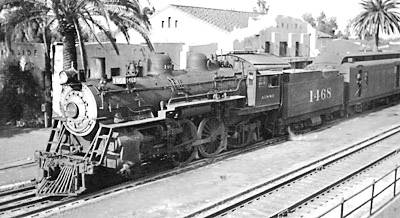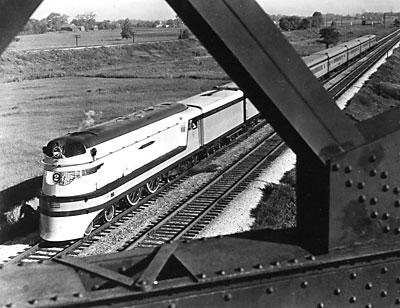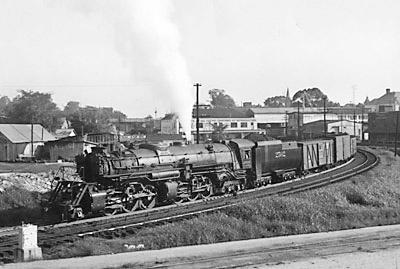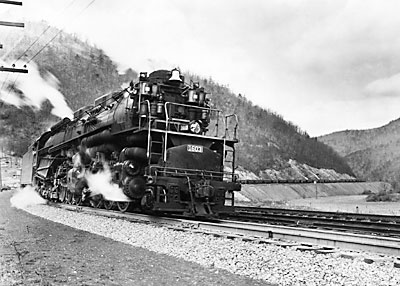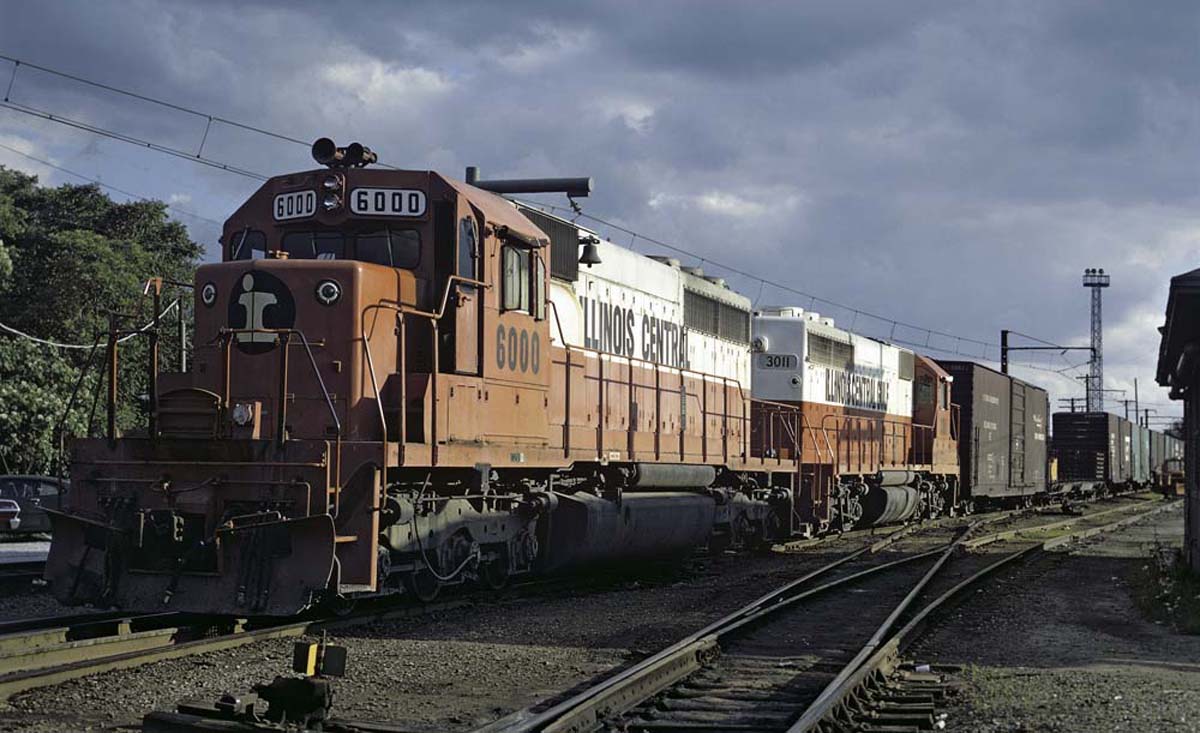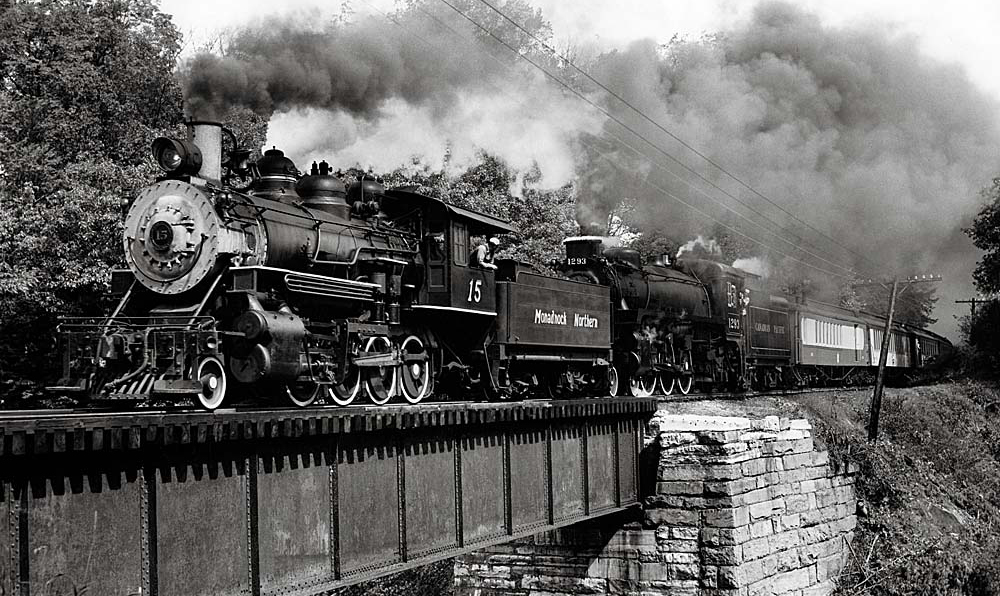This posed a problem for the passenger engines of the time, the 4-4-0 and 4-6-0. Neither had the horsepower to easily accelerate a train to those speeds and maintain them for extended periods. Their fireboxes, which sat on the frame between the driving wheels, had grates that were too small to evaporate enough water for sustained high-speed performance.
Since overall train lengths hadn’t really grown, however, a four-coupled locomotive still had enough adhesion to handle these faster assignments – it just needed more horsepower. The most straightforward solution was to build a more powerful four-coupled engine, one with a larger firebox.
The new engine borrowed the concept of the two-wheel trailing truck from the 2-4-2 – a relatively new but not very successful passenger engine. By using the trailing truck for support, the firebox could be made much wider since it was positioned behind the rear drivers instead of between them. The four-wheel engine truck used in the 4-4-0 was retained, which gave the engine excellent riding stability at high speeds.
The resulting 4-4-2 locomotive proved to be a very successful design that quickly took over the work of handling the premier passenger trains.
The first 4-4-2s were built by Baldwin (which had designed the earlier 2-4-2), and delivered to the Atlantic Coast Line in 1894. The wheel arrangement thus acquired the name Atlantic.
The 4-4-2 popularized the use of the trailing truck – a relatively new invention. On the first Atlantics, the trailing truck axle was held by a rigid pedestal attached to the locomotive frame. It was soon replaced with pedestals that allowed some lateral movement of the axle on curves. Later, a radial truck was developed that pivoted when going around curves. This proved to be very successful, and was subsequently used on all new steam power, including the 4-6-2 and 2-8-2.
The 4-4-2 was built in substantial numbers over a period of 25 years. During that time, advances in locomotive technology were incorporated into the Atlantic’s design, such as superheating, piston valves, and outside valve gear.
About 1,900 Atlantics were built, and they found a ready home in high-speed passenger service, handling premium passenger trains in level territory.
The introduction of steel passenger cars in the early part of the 20th century spelled the end of the 4-4-2. Steel cars were somewhat of a novelty at first, but after the Pennsylvania Railroad ordered 500 of them in 1907 other railroads soon followed. A trainload of heavy steel cars was beyond the pulling capabilities of the 4-4-2, however, and the more powerful 4-6-2 locomotive type soon became the standard passenger engine.
Between 1936 and 1938, Canadian Pacific acquired 25 streamlined 4-4-4s. Known as the Jubilee type (to commemorate the 50th anniversary of CP’s transcontinental passenger service), they were intended to power new lightweight passenger trains the railroad had placed in service on both its main and branch lines. The locomotives surely would have been 4-4-2s had it not been necessary to spread the engine weight over additional axles in order to run on lightweight branch lines.





